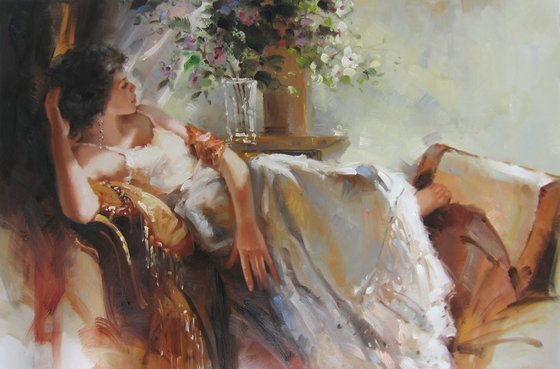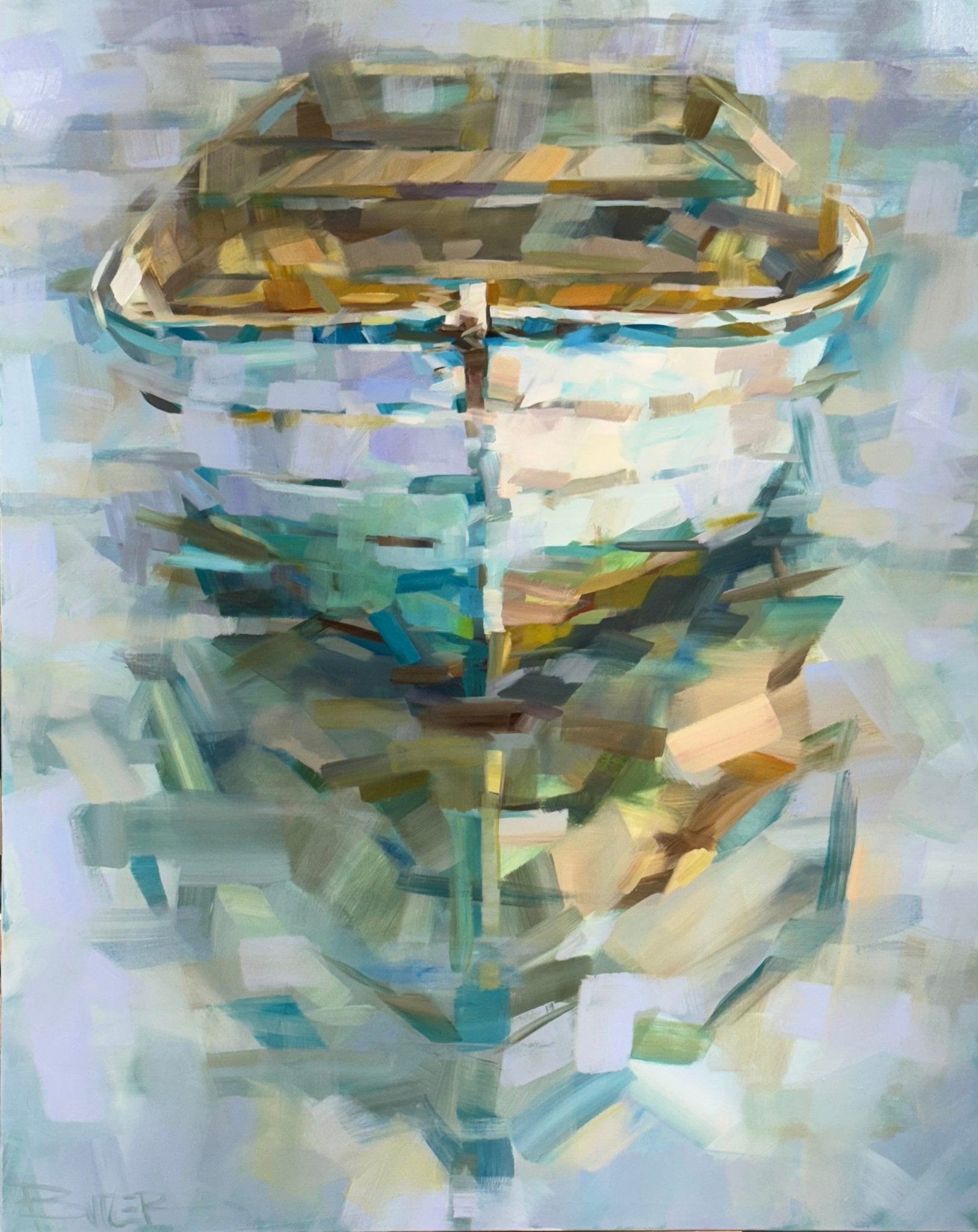Browse Classic Fine Art Oil Paintings for Sale Today
Browse Classic Fine Art Oil Paintings for Sale Today
Blog Article
The Benefits of Getting Oil Paints: Why They Are a Timeless Financial investment
The benefits of acquiring oil paints expand past mere aesthetic appeals. These art work bring historic relevance and cultural worth, making them worthwhile enhancements to any collection. Their unique appearances and techniques add to an engaging aesthetic experience. Well established musicians typically see their job appreciate over time, offering a prospective economic benefit. As one explores the diverse reasons for buying oil paints, the deeper ramifications of such a selection ended up being increasingly noticeable
The Aesthetic Allure of Oil Paints
The allure of oil paints lies in their rich textures and vivid colors, which can change any type of area into a fascinating atmosphere. These art work have a deepness that mesmerizes visitors, drawing them into the details of the brushstrokes and the interaction of light and shadow. The glossy finish of oil paint enhances the aesthetic experience, giving life to scenes and subjects in such a way that other mediums usually can not achieve. Additionally, the variety of styles-- from classic to modern-- enables for a varied option that can complement any type of style. The emotional resonance shared with color options and techniques includes a layer of connection in between the onlooker and the art work, making oil paintings not just decorative items, yet effective expressions of creative vision.
Historical Significance and Cultural Worth
Oil paints work as vital web links to an imaginative heritage, showcasing strategies and styles that have evolved over centuries. They encapsulate cultural expressions and identifications, showing the values and stories of their time. By obtaining these works, individuals add to the conservation of history and the gratitude of varied cultural heritages.
Creative Heritage Preservation
While many may forget the relevance of artistic heritage, purchasing oil paintings plays a necessary role in maintaining cultural and historic narratives. These art work work as visual documents of their time, catching the significance of societal worths, practices, and historic occasions. By acquiring oil paints, collectors add to the safeguarding of social legacies, guaranteeing that future generations can discover and value from these creative expressions. Each item mirrors the unique tale of its creator and the context in which it was made. Furthermore, the ongoing recognition and screen of oil paints in different settings help to cultivate an understanding of varied artistic activities, improving the social landscape. As a result, purchasing oil paintings is not merely a financial decision but an act of social stewardship.
Cultural Expression and Identity
Art offers as a powerful medium for cultural expression and identification, mirroring the varied narratives that form cultures. Oil paints, specifically, record the essence of social heritage, highlighting sociopolitical environments and historic contexts. Each brushstroke communicates feelings and tales one-of-a-kind to specific traditions, permitting customers to engage with the artist's social history. This link cultivates a feeling of belonging and comprehending amongst various communities. In addition, oil paintings typically work as aesthetic paperwork of social advancement, showcasing changes in identity gradually. The investment in these art work not only sustains musicians but also protects cultural traditions, making them significant assets for collection agencies. Eventually, oil paints boost one's appreciation for the ins and outs of human experience and the rich tapestry of cultural identity.
Recognition in Value With Time

The admiration of oil paints with time is affected by numerous aspects, consisting of historical value trends that reflect transforming preferences and social value. Furthermore, the track record of the artist plays a vital duty in figuring out the art work's market value, usually raising as the musician gains recognition. Market demand fluctuations can additionally influence rates, making oil paintings a possibly profitable investment for enthusiasts.
Historical Worth Patterns
As enthusiasts seek to purchase substantial properties, the historical worth patterns of oil paints expose a compelling story of appreciation in time. Historically, oil paintings have demonstrated a regular upward trajectory in value, especially for jobs by recognized musicians. Economic cycles and market need have actually affected these trends, with periods of raised interest often leading to significant price surges. Auction records often highlight the remarkable returns attained by famous pieces, better strengthening the notion of oil paints as feasible long-lasting investments. In addition, social movements and changes in enthusiast choices have actually sometimes spurred unanticipated recognition, disclosing that the art market, while somewhat unforeseeable, usually favors quality oil paintings. Recognizing these historical trends can assist financiers in making educated choices.
Musician Reputation Effect
While the track record of an artist plays a crucial role in the admiration of oil paints, it is important to recognize that this impact can differ significantly based upon a number of factors. Developed musicians, specifically those with a significant historic or social influence, have a tendency to see their works appreciate extra quickly. Alternatively, lesser-known or arising artists might not experience the very same level of demand, impacting their artwork's worth. In addition, the artist's ability to create a consistent body of work and maintain importance in the art world can affect long-term admiration. Enthusiasts usually seek works from musicians who are recognized by respectable galleries and institutions, which can even more improve the worth of an oil paint with time, making artist credibility an essential consideration in investment decisions.

Market Need Changes
Just how do market demand variations influence the recognition of oil paints in time? The worth of oil paints is fundamentally connected to market need, which can vary based upon economic problems, patterns, and collectors' preferences. In times of financial success, demand usually rises, causing raised costs as even more customers enter the market. Alternatively, during economic downturns, demand may decrease, creating worths to stagnate or perhaps decline. In addition, the appeal of particular musicians can shift, impacting their work's charm. Eventually, recognizing market need is vital for investors, as well-managed collections can appreciate substantially over time, mirroring both the ability of the musician and the wider market characteristics. This interplay underscores the significance of calculated getting in oil painting investments.
Distinct Structures and Methods
Oil paints captivate customers with their distinct appearances and strategies, showcasing the musician's proficiency over the medium. The thick application of paint, known as impasto, creates a three-dimensional effect, inviting touch and improving visual depth. Musicians usually employ various brush strokes, layering, and polishing approaches to achieve luminous shades and elaborate details. This adaptability permits abundant contrasts and subtle changes, making each artwork uniquely meaningful. In addition, the sluggish drying out time of oil paint makes it possible for artists to mix colors seamlessly, causing vibrant colors and smooth gradients. These methods add to the paint's general character, making it a compelling prime focus. Each oil paint acts as an indication of the creativity and ability integral in traditional creative techniques.
Adaptability in Home Design
The distinct textures and methods of oil paintings not just showcase creative skill but likewise enhance their convenience in home style. These art work can perfectly enhance numerous indoor styles, from modern minimal to traditional beauty. Oil paints function as focal points, drawing focus and triggering discussion among guests. Their rich colors and depth can balance with various color palettes, making them versatile to transforming style patterns. In addition, the psychological vibration of oil paints can develop ambiance, whether it be warmth in a comfy living-room or vibrancy in a creative workspace. By incorporating oil paints, property owners elevate their spaces, changing them right into attentively curated environments that reflect personal taste and creative appreciation. Ultimately, oil paintings are a long-lasting selection for enhancing home aesthetics.
Link to Renowned Artists
While numerous art types can evoke admiration, buying oil paints often develops a special connection to distinguished artists throughout background. Owning an oil paint enables collection agencies to engage with the imaginative visions of masters like Van Gogh, Monet, and Rembrandt. Each brushstroke personifies the musician's strategies, intents, and emotions, supplying understanding right into their world. This connection transcends time, as each piece lugs a story that reflects the historic and cultural context of its production. Enthusiasts not just obtain an artwork however additionally a piece of the artist's tradition. As art lovers explore the stories behind these paints, they get a deeper appreciation for the craftsmanship and imaginative activities that shaped their growth, enhancing the worth of their investment.
Psychological and Mental Advantages of Art
Art frequently functions as an effective driver for emotional and emotional well-being. The presence of oil paints in a space can evoke a series of feelings, from harmony to motivation. Their intricate details and lively colors supply viewers a getaway, enabling reflection and contemplation. Researches suggest that engaging with art can lower stress and anxiety, fostering a feeling of calm. Furthermore, having initial art work can produce an individual link, boosting feelings of pride and happiness. This psychological bond frequently causes a much more info deeper appreciation of one's surroundings, transforming a house into a home. Eventually, the psychological advantages of art expand beyond aesthetics, adding to general mental health and enhancing life experiences.

Regularly Asked Concerns
How Do I Pick the Right Oil Painting for My Room?
Selecting the best oil paint involves taking into consideration the area's shade system, dimension, and overall aesthetic. One should examine personal taste, the painting's psychological impact, and how well it matches existing decoration before making a decision.

What Factors Influence the Worth of an Oil Paint?
The value of an oil painting is influenced by variables such as the artist's online reputation, provenance, historic importance, rarity, market, and condition demand. Each aspect adds to general worth and value among enthusiasts.
How Can I Look After and Keep My Oil Paint?
To look after and maintain an oil painting, one should routinely dust it with a soft cloth, stay clear of straight sunshine exposure, control moisture degrees, and think about specialist cleaning to protect its vibrancy and honesty.
Are There Particular Artists Understood for Their Oil Paints?
Countless artists are renowned for their oil paintings - oil paintings for sale. Notable figures consist of Vincent van Gogh, Claude Monet, and Rembrandt, each commemorated for their unique strategies and payments to the art globe through vivid, distinctive oil tools
Where Can I Purchase Genuine Oil Paints?
Authentic oil paints can be acquired from reliable galleries, art fairs, and on-line platforms specializing in art. Collectors should verify the credibility and provenance before purchasing to assure a valuable investment. Historically, oil paintings have shown a constant upward trajectory in value, especially for jobs by well-known artists. While the track record of an artist plays a vital role in the admiration of oil paintings, it is essential to recognize that this effect can differ substantially based on several factors. Oil paints mesmerize customers with their distinct appearances and methods, showcasing the artist's proficiency over the tool. While numerous art kinds can evoke adoration, purchasing oil paints frequently establishes an one-of-a-kind link to distinguished artists throughout history. The worth of an oil painting is influenced by aspects such as the artist's track record, provenance, historical importance, market, condition, and rarity need.
Report this page